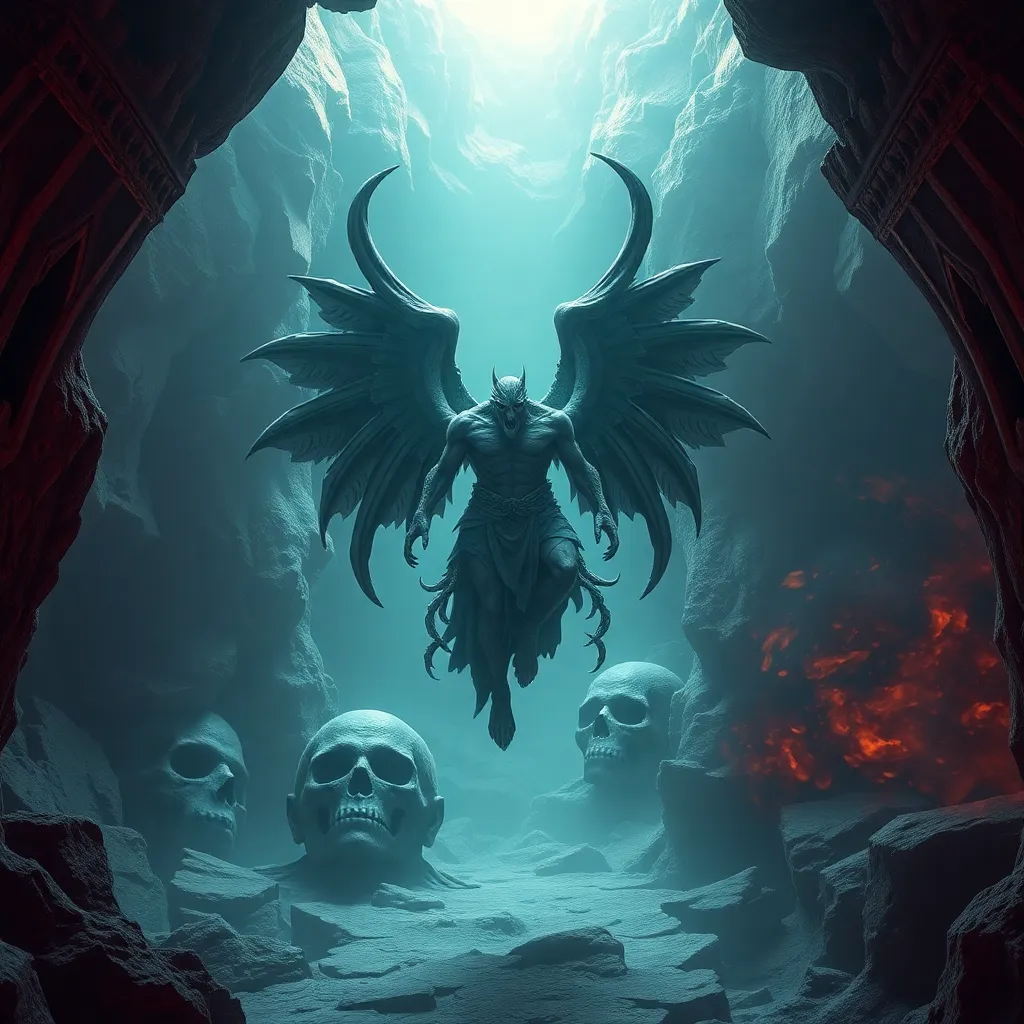The Underworld’s Depiction in Modern Films and Television
I. Introduction
The concept of the Underworld has long fascinated humanity, serving as a rich tapestry of beliefs and stories across cultures. In cultural contexts, the Underworld is often defined as a realm where souls reside after death, a place of judgment, or a domain ruled by deities associated with death and the afterlife.
The importance of the Underworld in storytelling cannot be overstated; it acts as a backdrop for exploring profound themes such as mortality, redemption, and the afterlife. The Underworld embodies the fears and hopes surrounding death, making it a compelling subject in literature and art.
This article aims to explore how the Underworld has been depicted in modern films and television, examining historical contexts, iconic representations, and the societal issues reflected in these narratives.
II. Historical Context of the Underworld in Mythology
Ancient myths and beliefs about the Underworld vary significantly across cultures. For instance, Greek mythology presents the Underworld as a realm ruled by Hades, where souls are judged and sent to various fields, such as Elysium or Tartarus. In Norse mythology, Hel is a similar domain, overseen by the goddess Hel, where those who did not die gloriously in battle reside.
The Egyptian conception of the afterlife is embodied in the Duat, a complex realm where souls navigate various challenges to reach the Field of Reeds. These ancient depictions emphasize the Underworld as a place of transition and judgment, reflecting societal values regarding life and death.
Over time, these mythological representations have transitioned into modern interpretations, often stripped of their original religious significance and instead focusing on personal, psychological, and fantastical elements.
III. Modern Film Representations of the Underworld
Numerous iconic films have featured the Underworld, each bringing unique perspectives and interpretations. For example:
- “What Dreams May Come” explores the afterlife through vibrant visuals, portraying heaven and hell as reflections of one’s emotional state.
- “The Matrix” uses the Underworld metaphorically to represent a false reality, where characters must navigate a world controlled by machines.
Themes and motifs commonly associated with the Underworld in cinema include:
- The struggle for redemption
- The quest for truth and understanding
- The confrontation with one’s fears and past
Visually and artistically, the portrayal of the Underworld in films often employs surreal landscapes, haunting imagery, and intricate special effects, creating immersive experiences that captivate audiences.
IV. Television Series and the Underworld
Television series have also delved into Underworld themes, with popular shows like:
- “Supernatural” exploring various mythologies around death and the afterlife, featuring angels, demons, and the souls of the departed.
- “American Horror Story” weaving narratives that touch on the macabre aspects of the Underworld, often blending horror with social commentary.
Character development and narrative arcs within these series frequently involve journeys to or interactions with the Underworld, allowing for complex explorations of morality and existence.
Audience reception of these portrayals has been significant, with many viewers finding resonance in the themes of loss, redemption, and the consequences of one’s actions, often leading to cultural discussions and analyses.
V. The Underworld as a Reflection of Societal Issues
Modern depictions of the Underworld often address contemporary fears and concerns. Issues such as:
- Anxiety surrounding death and the afterlife
- Social justice and the consequences of one’s actions
- Existential crises and personal struggles
can be explored through the lens of the Underworld. For instance, films like “The Seventh Seal” confront mortality directly, while shows like “The Good Place” use humor to address philosophical inquiries about ethics and the afterlife.
These narratives serve as case studies illustrating how the Underworld can be a powerful metaphor for personal and societal struggles, prompting viewers to reflect on their own lives and choices.
VI. Comparisons Between Different Media
There are notable differences in the portrayal of the Underworld between films and television. Films often present a condensed narrative arc, focusing on key moments and climaxes, while television series can explore the Underworld through episodic storytelling, allowing for deeper character development and exploration of themes over time.
The role of technology and special effects has also evolved, with advancements enabling filmmakers and showrunners to create more visually stunning and immersive representations of the Underworld. This technological influence has transformed audience expectations, as viewers now seek more elaborate and engaging depictions.
VII. Audience Interpretation and Cultural Significance
Viewers relate to Underworld themes and characters in diverse ways. The portrayal of the Underworld often prompts personal reflections on life, death, and morality. As audience perceptions evolve over time, so do the narratives, reflecting changing societal values and concerns.
Moreover, fan communities play a crucial role in shaping the narrative surrounding the Underworld. Through discussions, fan fiction, and online forums, audiences contribute to the cultural significance of these portrayals, ensuring that the Underworld remains a relevant topic in modern storytelling.
VIII. Conclusion
In summary, the depiction of the Underworld in modern films and television provides a fascinating lens through which to explore complex themes of life, death, and morality. The enduring fascination with the Underworld speaks to humanity’s innate curiosity about the afterlife and the mysteries beyond our existence.
As storytelling continues to evolve, the future directions for the depiction of the Underworld may incorporate even more diverse perspectives and innovative narratives, ensuring that this timeless theme remains a vital part of our cultural fabric.




